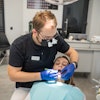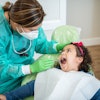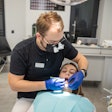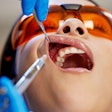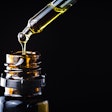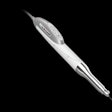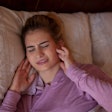Significant variation exists in the training for and practice of dental sedation and general anesthesia among U.S. providers, according to a study in Anesthesia Progress (Summer 2010, Vol. 57:2, pp. 52-58).
A universal instructional standard for sedation and general anesthesia is lacking in the training requirements of U.S. dental boards, although similarities do exist, the study authors noted.
Researchers from the University of Pittsburgh analyzed the survey responses of 717 dental sedation/anesthesia providers from April 2008 to December 2008 on their training, practice characteristics, and anesthesia techniques. Most respondents identified their primary practice as oral and maxillofacial surgery (49.7%), general dentistry (20.0%), or dental anesthesiology (10.4%). Others included periodontology (7.7%), pediatric dentistry (4.6%), endodontics (4.3%), medical (physician) anesthesiology (2.7%), prosthodontics (0.3%), and public health (0.3%).
The researchers found that training was most commonly done through oral surgery residencies, with 33% of respondents' postgraduate instruction being hospital-based.
They also analyzed the types of auxiliary personnel used with dental sedation/anesthesia practice. They found that dental anesthesia assistants without formal training made up 35% of the auxiliary personnel used, closely followed by those who received training through an American Association of Oral and Maxillofacial Surgeons program (33.5%). A much lower 7.3% of personnel were trained through an American Dental Society of Anesthesiology program.
Other aspects of the survey included types of patients and procedures for which sedation or general anesthesia were used. The questionnaire also asked which premedication agents were most commonly used and how they were administered.
Triazolam was the most frequently used agent among endodontists (64.7%), general dentists (59.0%), periodontists (52.7%), public health practitioners (50.0%), and prosthodontists (100%) providing sedation/anesthesia services. Pediatric dentists indicated that they most often use Demerol and hydroxyzine elixir (36.4%) for premedication.
The overall response illustrated that U.S. dental sedation/anesthesia providers most commonly use intravenous deep sedation (40% of practice devoted to this technique) in their sedation/anesthesia practice. This was followed by intravenous conscious sedation (35% of anesthesia practice devoted to this technique), oral sedation (20%), and general endotracheal intubation (7%).
Postanesthesia care was most commonly found to be given by the actual provider (51.7% of cases), but nurses and assistants also provided recovery care (45%).
Most survey respondents (nearly 82%) were both dentist and anesthetist for their practice. However, the authors noted that recent state regulations and anesthesia education in U.S. dental schools are now limiting this method of practice.
Copyright © 2010 DrBicuspid.com
